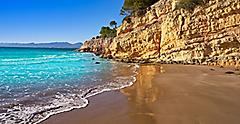From the famed Colosseum of Rome to the masterpieces of Titian, Italy is defined by its stunning architectural marvels steeped in artistic tradition. Its major cities are home to some of the world's premier museums and monuments, while its smaller towns and villages are works of art in themselves. Many Italy tours are devoted entirely to illuminating the country's aesthetic wonders, and there's truly nothing like exploring Rome's ancient streets and Venice's labyrinthine waterways for yourself. But until then, it can't hurt to soak in a little pre-trip inspiration.
Read on for a guide to the cities with the must-see Italian architecture and art around the country.
Romain Architecture: All Roads Lead To Rome
All roads lead to Rome," the saying goes, and there's a reason for that. Images of Rome's ornate architectural wonders have been emblazoned in my imagination since my college art history course "Visualizing Ancient Rome." I've dreamed of wandering the ancient cobblestone streets of this unfamiliar city, with medieval ruins towering above me, feeling the palpable energy of Rome's long history.
It would be years before I actually visited the city myself, and that college course had set my expectations pretty high (impossibly high, I feared). Luckily, Rome is every bit as impressive in person as my dreams led me to believe.
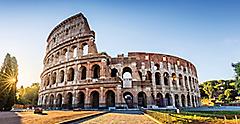
The Colosseum
What is the most famous architecture in Italy? When you think of Rome, you think of the Colosseum. This massive oval amphitheater stands strong in the center of Rome, a hallmark and popular landmark at the center of the city's history. Built between 70 A.D. and 80 A.D., the Colosseum could hold around 65,000 attendees and was used for theatrical productions, gladiator fights, and recreations of famous battles. The horde of like-minded tourists might dissuade you from paying for a tour of the interior, but if there's one place that's actually worth enduring the crowds — this is it. Only 3,000 people are allowed inside at any given time, so get there early and embrace the exciting atmosphere. It'll feel like you've been transported back to Roman times.

The Pantheon
The Pantheon was built as a temple in 126 A.D. by Emperor Hadrian and has functioned as a church since the 7th century. Its defining characteristic is its massive domed ceiling with an oculus, or central opening, which sunlight pours through. Standing there under the ornate ceiling as the sun shines on your face, it truly feels like you're in the presence of the gods. Indeed, its name means "all the gods" in Greek, and it was originally built as a temple to all the gods, statues of whom can be found around the building.
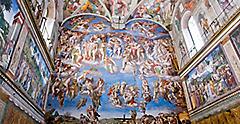
The Sistine Chapel
The Sistine Chapel in Vatican City is the official residence of the Pope, but it's also home to some of Michelangelo's most famous works. His ceiling frescoes were commissioned by Pope Julius II in 1508, and depict various scenes from the Old Testament. His "The Last Judgment" fresco, showing the second coming of Christ, can be found on the west wall and was painted between 1534 and 1541. You're not allowed to take any photos, but that's OK as you'll be too busy craning your neck in awe of Michelangelo's masterpieces — you'll completely forget to reach for your camera in the first place.
Getting Lost In The Best Of Venice’s Architecture
Easy to explore on foot, Venice is one of those cities you could traverse a thousand times and still find new aesthetic charms to marvel at. I once lost myself (literally and figuratively) in Venice's labyrinthine canal system at night, which in any other city might have been a harrowing experience, but here felt like wandering through a painting.
The canals wind throughout the city, weaving between and connecting Venice's many islands. You can explore the canals via gondola, or you can walk alongside the water, below the bridges and the streets. It only takes one wrong turn to lose your way, and I likely took several after a night of bar crawling on the island of San Marco and had to navigate the cobblestone maze in the dark. Whether it's exploring the canals or paying homage to an Italian master painter during the day, Venice is not only a city of enchanting history but one of the best in Italy for architecture and art.
Palazzo Ducale Di Venezia
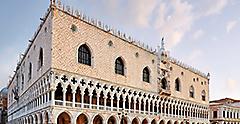
Library Of San Marco
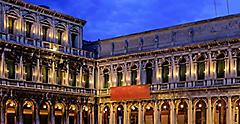
Ca' Pesaro
The Architectural Jewel Of Florence
Italy tours focusing on art can't skip Florence architecture, the Tuscan capital teeming with cultural history. What type of architecture is in Florence? Known as the primary setting for the Italian Renaissance, as well as its abundance of Italian museums, stunning buildings, and of course, wine and gelato, Florence is the ultimate city for indulgence. Sure, Tuscany's more rural towns and villages are beautiful, but no trip to Italy is complete without a visit to the birthplace of the Italian artistic tradition.
The Florence Cathedral
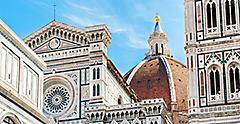
Galleria Degli Uffizi
Galleria Dell'accademia
Milan Architecture: Not Just For Fashion!
Milan is known for its fashion scene — it's the home of the famous Milan Fashion Week — but nothing is more fashionable than a city steeped in art and architectural history. Don't let all those well-heeled international visitors carrying expensive Gucci handbags intimidate you. A rich experience can be had when traveling to Milan even if you're on a budget by visiting some of the city's most ancient and celebrated castles, churches, and museums.
Sforzesco Castle
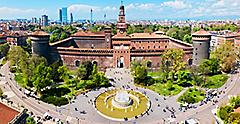
Il Duomo Di Milano
The Basilica Of Sant'ambrogio
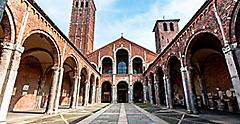
Get Royal Deals, Sign Up Today

Getting There
Explore Our Most Affordable Itineraries
Explore the history of Italian architecture and art on your Italy cruise.





